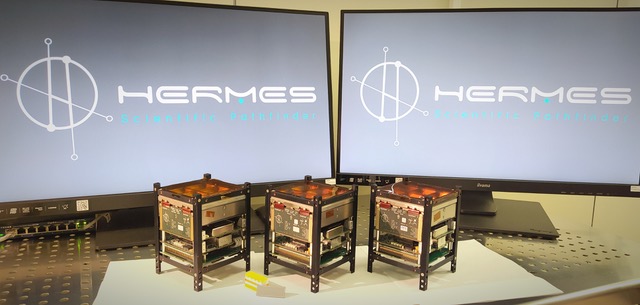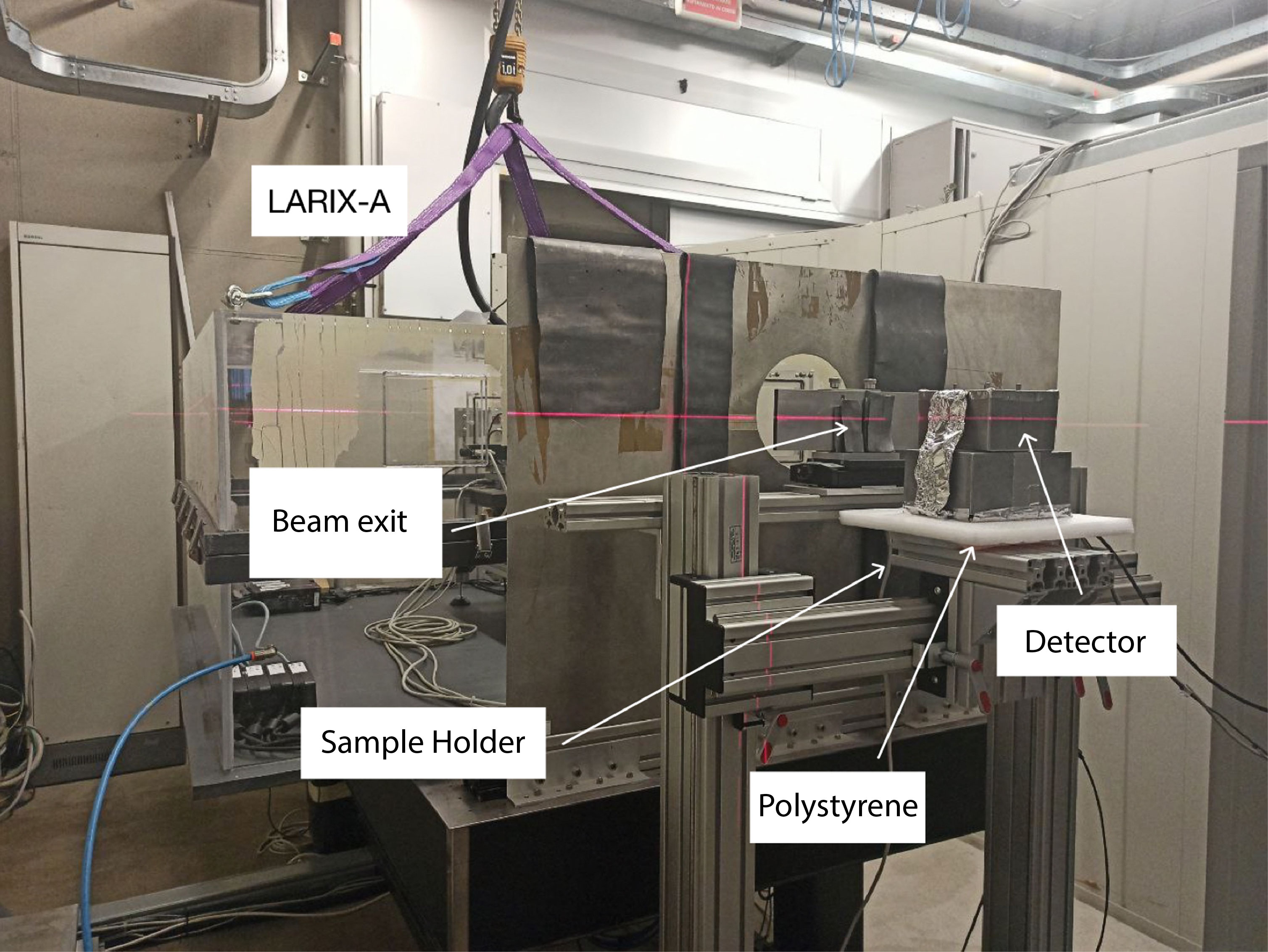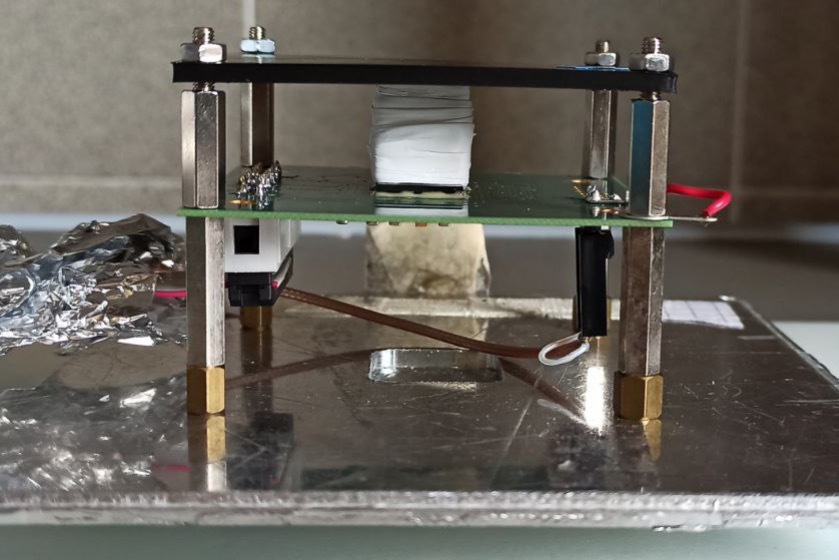HERMES (High Energy Rapid Modular Experiment Scintillator)
Project website: https://www.hermes-sp.eu/
PI. Fabrizio Fiore
HERMES-SP (High Energy Rapid Modular Ensemble of Satellites – Scientific Pathfinder) is a mission concept based on a constellation of nano-satellites in low Earth orbit (LEO), hosting new miniaturised detectors to probe the X-ray temporal emission of bright high-energy transients such as Gamma-Ray Bursts (GRB) and the electromagnetic counterparts of Gravitational Wave Events (GWE).

Group photo of the firsts three HERMES Pathfinder Payloads.
The HERMES detector is based on the so-called “siswich” concept, exploiting the dual intrinsic sensitivity of silicon to both soft X-rays and scintillation light, aiming at designing a compact instrument with a very wide sensitivity band, from 2 keV up to 2 MeV. The detector is composed by an array of scintillator pixels and by SDDs. The SDDs are used to both detect soft X-rays, by direct absorption in silicon, and to simultaneously readout the scintillation light (high energies).

The working principle of a siswich detection system. The SDD, directly facing the sky, is coupled with a GAGG:Ce scintillator crystal. The low energy radiation (< ~30keV) interacts in the SDD. Photons with higher energy cross the SDD and interact in the scintillator. The light output is collected by SDD.
The inorganic scintillator selected for HERMES is the Cerium-doped Gadolinium-Aluminum-Gallium Garnet (GAGG:Ce). These scintillators present a discontinuity related to the k shell of the Gadolinium at 50.23 keV. The objective of this work was to study the response, in terms of absolute amplitude and light output, of a GAGG:Ce scintillator coupled to an SDD. Due to the LARIX-A energy range (10-200 keV) we were able to study in detail this discontinuity. The prototype under test consist in one scintillator crystal coupled with an SDD. Three different samples of scintillators were tested: two 6.94×12.10×15 mm3 produced by the Japanese company C&A (the same type as those that will be used in HERMES); and one of 10×10×30 mm3, produced by Advatech Inc., UK. The three samples were tested in the LARIX-A facility by using the monochromator beam from 20-160 keV. The samples were placed just after the monochromator, ~ 10 cm from the second collimator.


Experimental setup for the GAGG:Ce test campaign at LARIX-A facility.
